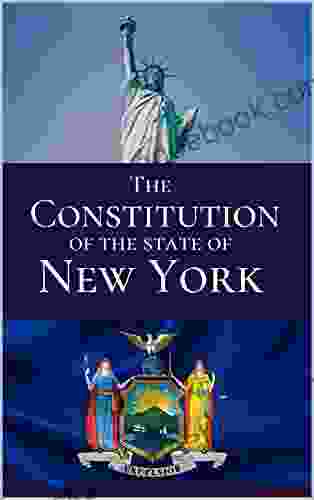The Story of Inequality in Australia: A Redback Quarterly Analysis

Inequality has been a growing concern in Australia for decades, and the Redback Quarterly has been at the forefront of reporting on this issue. In this article, we will provide an overview of the history of inequality in Australia, the current state of affairs, and the policies that have been proposed to address it.
A Brief History of Inequality in Australia
Australia has a long history of inequality, dating back to the colonial era. The early settlers were predominantly wealthy landowners, while the majority of the population lived in poverty. This inequality was exacerbated by the White Australia policy, which restricted immigration from non-European countries. As a result, Australia remained a relatively homogeneous society with a small wealthy elite and a large working class.
4 out of 5
| Language | : | English |
| File size | : | 2207 KB |
| Text-to-Speech | : | Enabled |
| Enhanced typesetting | : | Enabled |
| Word Wise | : | Enabled |
| Print length | : | 218 pages |
| Screen Reader | : | Supported |
In the post-war era, Australia experienced a period of rapid economic growth. This growth led to a rise in living standards for all Australians, but it also led to an increase in inequality. The gap between the wealthy and the poor widened, and the middle class began to shrink.
This trend continued in the 1980s and 1990s, as Australia adopted neoliberal economic policies. These policies led to a decrease in government spending on social programs, a decline in union power, and a rise in precarious employment. As a result, inequality continued to increase, and Australia became one of the most unequal countries in the developed world.
The Current State of Inequality in Australia
Today, Australia is one of the most unequal countries in the developed world. The gap between the rich and the poor is wider than it has been in decades, and the middle class is shrinking. This inequality is reflected in a number of statistics.
* The richest 1% of Australians own more wealth than the bottom 50% of Australians combined. * The gap between the average income of the richest 10% of Australians and the average income of the poorest 10% of Australians is now more than ten times. * The number of Australians living in poverty has increased significantly in recent years.
Inequality in Australia is not just a matter of statistics. It is also a matter of lived experience. Australians from all walks of life are feeling the effects of inequality. They are struggling to make ends meet, they are worried about their future, and they are losing faith in the system.
The Causes of Inequality in Australia
There are a number of factors that have contributed to the rise of inequality in Australia. These factors include:
* Globalization: The globalization of the economy has led to increased competition for jobs and wages. This has put downward pressure on wages for many Australians, while the profits of multinational corporations have soared. * Neoliberalism: The adoption of neoliberal economic policies in the 1980s and 1990s has led to a decrease in government spending on social programs, a decline in union power, and a rise in precarious employment. These policies have made it more difficult for Australians to get ahead, and they have contributed to the rise of inequality. * Taxation: The Australian tax system is regressive, meaning that it takes a larger share of income from low- and middle-income earners than it does from high-income earners. This regressivity contributes to inequality. * Education: The Australian education system is not equal. Children from wealthy families have access to better schools and resources than children from poor families. This inequality in education leads to inequality in economic outcomes later in life. * Discrimination: Discrimination against women, Indigenous Australians, and other marginalized groups contributes to inequality. These groups face barriers to employment, education, and housing, which makes it difficult for them to get ahead.
The Impact of Inequality in Australia
Inequality has a number of negative consequences for Australia. It:
* Undermines economic growth: Inequality can lead to a decrease in economic growth by reducing consumer demand and investment. * Increases social unrest: Inequality can lead to social unrest and conflict. People who feel that they are being left behind are more likely to become frustrated and angry, and they may be more likely to engage in protests or violence. * Damages our democracy: Inequality can damage our democracy by making it more difficult for ordinary Australians to have their voices heard. The wealthy have more access to politicians and policymakers than the poor, and they are more likely to be able to influence the political process. * Harms our health and well-being: Inequality can have a negative impact on our health and well-being. People who live in poverty are more likely to experience chronic diseases, mental illness, and other health problems. They are also more likely to die young.
Policy Options to Address Inequality in Australia
There is a range of policy options that can be used to address inequality in Australia. These options include:
* Increasing government spending on social programs: This would help to provide a safety net for the poor and vulnerable, and it would also help to boost economic growth. * Raising the minimum wage: This would help to put more money in the pockets of low-wage workers, and it would also help to reduce poverty. * Making the tax system more progressive: This would mean that high-income earners would pay a larger share of taxes than low- and middle-income earners. This would help to reduce inequality and raise revenue for social programs. * Investing in education: This would help to ensure that all Australians have access to a quality education, regardless of their background. This would lead to greater equality of opportunity and economic outcomes. * Addressing discrimination: This would mean implementing policies to eliminate discrimination against women, Indigenous Australians, and other marginalized groups. This would help to level the playing field and give everyone a fair chance to succeed.
These are just some of the policy options that can be used to address inequality in Australia. It is important to note that there is no one-size-fits-all solution to inequality. The best approach will vary depending on the specific circumstances of each country. However, the evidence suggests that the policies outlined above can be effective in reducing inequality and improving the lives of all Australians.
Inequality is a serious problem in Australia. It is a problem that has been growing for decades, and it is now at a crisis point. Inequality is undermining our economy, our society, and our democracy. It is also harming our health and well-being.
There are a range of policy options that can be used to address inequality in Australia. These options include increasing government spending on social programs, raising the minimum wage, making the tax system more progressive, investing in education, and addressing discrimination.
It is important to note that there is no one-size-fits-all solution to inequality. The best approach will vary depending on the specific circumstances of each country. However, the evidence suggests that the policies outlined above can be effective in reducing inequality and improving the lives of all Australians.
We need to take action to address inequality now. The future of our country depends on it.
4 out of 5
| Language | : | English |
| File size | : | 2207 KB |
| Text-to-Speech | : | Enabled |
| Enhanced typesetting | : | Enabled |
| Word Wise | : | Enabled |
| Print length | : | 218 pages |
| Screen Reader | : | Supported |
Do you want to contribute by writing guest posts on this blog?
Please contact us and send us a resume of previous articles that you have written.
 Page
Page Text
Text Library
Library Paperback
Paperback E-book
E-book Magazine
Magazine Newspaper
Newspaper Paragraph
Paragraph Sentence
Sentence Synopsis
Synopsis Annotation
Annotation Manuscript
Manuscript Scroll
Scroll Codex
Codex Classics
Classics Narrative
Narrative Autobiography
Autobiography Reference
Reference Thesaurus
Thesaurus Narrator
Narrator Librarian
Librarian Catalog
Catalog Borrowing
Borrowing Archives
Archives Periodicals
Periodicals Study
Study Research
Research Scholarly
Scholarly Lending
Lending Reserve
Reserve Academic
Academic Journals
Journals Rare Books
Rare Books Special Collections
Special Collections Interlibrary
Interlibrary Literacy
Literacy Thesis
Thesis Dissertation
Dissertation Storytelling
Storytelling Theory
Theory Melinda Curtis
Melinda Curtis Arthur Mathison
Arthur Mathison Course Hero
Course Hero Austin Buffum
Austin Buffum Erin Watt
Erin Watt S L Wallace
S L Wallace Jon Fuller
Jon Fuller Tamera Will Wissinger
Tamera Will Wissinger C R Hedgcock
C R Hedgcock Dennis Chong
Dennis Chong Roy Williams
Roy Williams Imogen Paige
Imogen Paige Brooke Binkley
Brooke Binkley Janet Evanovich
Janet Evanovich Meaghan Mcisaac
Meaghan Mcisaac Stephanie Calmenson
Stephanie Calmenson Diane Greenwood Muir
Diane Greenwood Muir Philip Kazan
Philip Kazan Julie Clark
Julie Clark Meredith Tax
Meredith Tax
Light bulbAdvertise smarter! Our strategic ad space ensures maximum exposure. Reserve your spot today!

 Garrett BellHow China's Western AI and Robotics Corporations Pose the Greatest Threat to...
Garrett BellHow China's Western AI and Robotics Corporations Pose the Greatest Threat to...
 Derrick HughesTheoretical Animals: Exploring the Boundaries of Form and Function by Gary...
Derrick HughesTheoretical Animals: Exploring the Boundaries of Form and Function by Gary... Andrew BellFollow ·16.2k
Andrew BellFollow ·16.2k Edison MitchellFollow ·7.1k
Edison MitchellFollow ·7.1k Jonathan FranzenFollow ·8.6k
Jonathan FranzenFollow ·8.6k Owen SimmonsFollow ·2.1k
Owen SimmonsFollow ·2.1k Ronald SimmonsFollow ·6.7k
Ronald SimmonsFollow ·6.7k Juan ButlerFollow ·7.6k
Juan ButlerFollow ·7.6k Jace MitchellFollow ·4.7k
Jace MitchellFollow ·4.7k Bret MitchellFollow ·13k
Bret MitchellFollow ·13k

 Amir Simmons
Amir SimmonsMore Zeal Than Discretion: A Closer Look at the Risks and...
Enthusiasm is often seen as a positive...

 Wayne Carter
Wayne CarterYear of the Dog: American Poets Continuum 178
Year of the Dog is a...

 David Foster Wallace
David Foster WallaceThe Constitution of the State of New York: A...
The Constitution of the...

 Harvey Bell
Harvey BellSmall Cetaceans of Japan: Exploitation and Biology
Small cetaceans, including...

 Blake Bell
Blake BellEffortless Elegance: A Comprehensive Guide to Captivating...
In the realm of crocheting,...
4 out of 5
| Language | : | English |
| File size | : | 2207 KB |
| Text-to-Speech | : | Enabled |
| Enhanced typesetting | : | Enabled |
| Word Wise | : | Enabled |
| Print length | : | 218 pages |
| Screen Reader | : | Supported |










